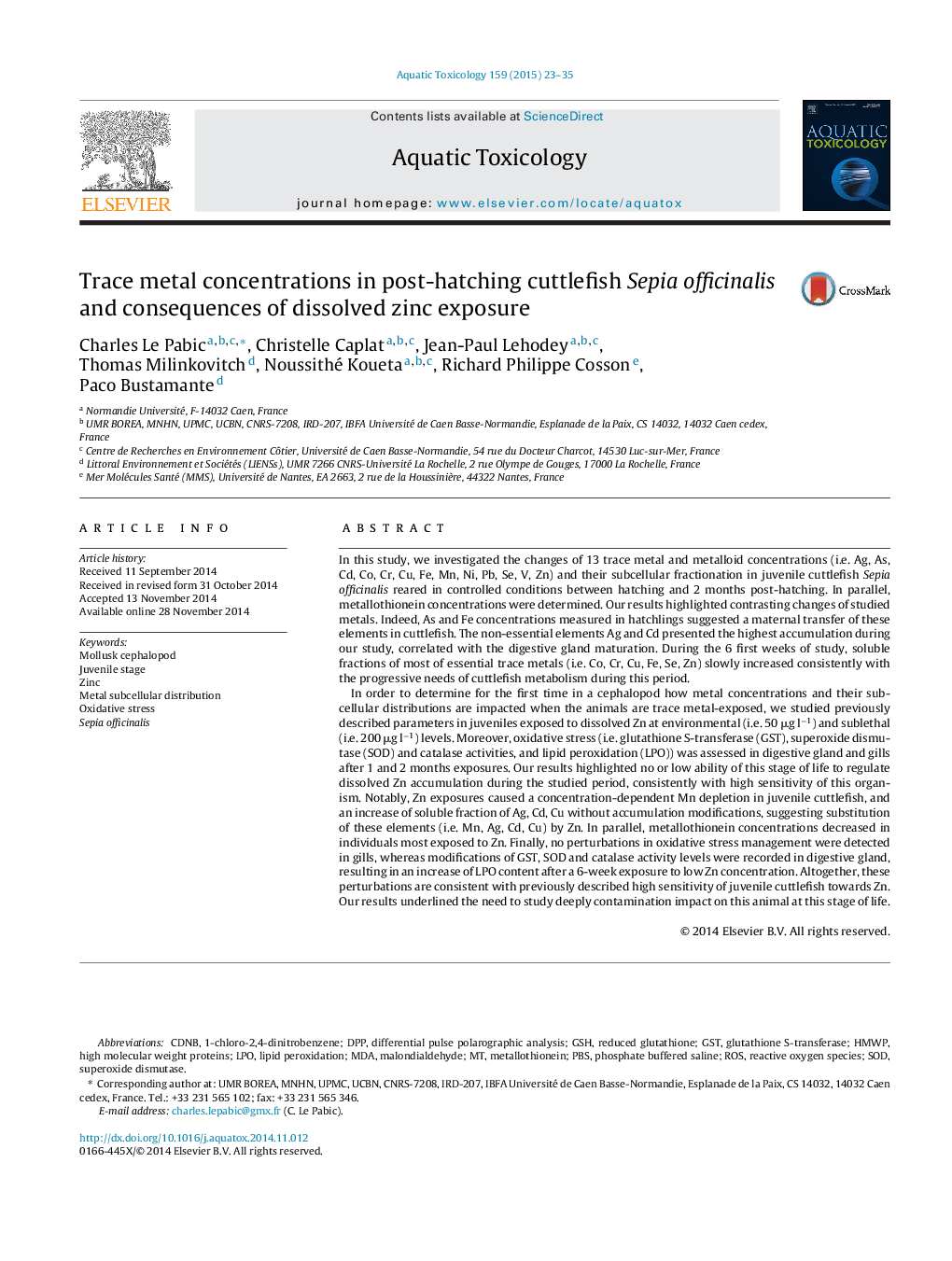| Article ID | Journal | Published Year | Pages | File Type |
|---|---|---|---|---|
| 6382268 | Aquatic Toxicology | 2015 | 13 Pages |
Abstract
In order to determine for the first time in a cephalopod how metal concentrations and their subcellular distributions are impacted when the animals are trace metal-exposed, we studied previously described parameters in juveniles exposed to dissolved Zn at environmental (i.e. 50 μg lâ1) and sublethal (i.e. 200 μg lâ1) levels. Moreover, oxidative stress (i.e. glutathione S-transferase (GST), superoxide dismutase (SOD) and catalase activities, and lipid peroxidation (LPO)) was assessed in digestive gland and gills after 1 and 2 months exposures. Our results highlighted no or low ability of this stage of life to regulate dissolved Zn accumulation during the studied period, consistently with high sensitivity of this organism. Notably, Zn exposures caused a concentration-dependent Mn depletion in juvenile cuttlefish, and an increase of soluble fraction of Ag, Cd, Cu without accumulation modifications, suggesting substitution of these elements (i.e. Mn, Ag, Cd, Cu) by Zn. In parallel, metallothionein concentrations decreased in individuals most exposed to Zn. Finally, no perturbations in oxidative stress management were detected in gills, whereas modifications of GST, SOD and catalase activity levels were recorded in digestive gland, resulting in an increase of LPO content after a 6-week exposure to low Zn concentration. Altogether, these perturbations are consistent with previously described high sensitivity of juvenile cuttlefish towards Zn. Our results underlined the need to study deeply contamination impact on this animal at this stage of life.
Keywords
Related Topics
Life Sciences
Agricultural and Biological Sciences
Aquatic Science
Authors
Charles Le Pabic, Christelle Caplat, Jean-Paul Lehodey, Thomas Milinkovitch, Noussithé Koueta, Richard Philippe Cosson, Paco Bustamante,
